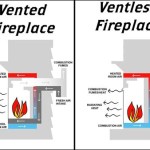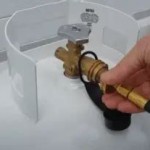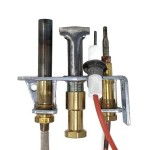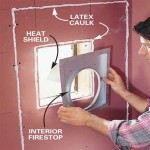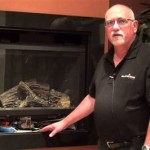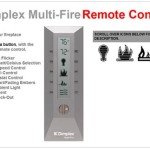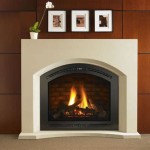Understanding Fireplace Air Vents: Functionality, Types, and Maintenance
Fireplace air vents, often overlooked components of a fireplace system, play a crucial role in the overall efficiency and safety of operation. These vents, strategically placed within and around the fireplace structure, serve multiple purposes, including regulating airflow, preventing overheating, and contributing to a more comfortable and controlled heating experience. This article delves into the functionality of fireplace air vents, explores the various types available, and provides essential information regarding their maintenance.
The Primary Functions of Fireplace Air Vents
The core function of a fireplace air vent is to manage the air circulation surrounding the fireplace firebox. This management is multifaceted and addresses several key areas related to fireplace performance and safety.
One primary function is to improve the efficiency of heat distribution. Traditional fireplaces are notoriously inefficient, as a significant portion of the heat generated escapes up the chimney. Air vents located in the upper portions of the fireplace, often integrated into a heat exchanger system, can capture some of this escaping heat and redirect it back into the room. These vents draw cool air from the lower part of the room, circulate it through a chamber surrounding the firebox where it is heated, and then release the warmed air back into the living space. This process helps to distribute heat more evenly throughout the room and reduce heat loss through the chimney.
Another critical function of fireplace air vents is to prevent the fireplace structure from overheating. The intense heat generated within the firebox can, over time, damage the surrounding masonry and potentially create a fire hazard. Vents strategically positioned around the firebox allow for the dissipation of excess heat, preventing the buildup of temperatures that could lead to structural damage or combustion of nearby materials. These vents provide an escape route for heat, allowing it to radiate into the surrounding space in a controlled manner rather than concentrating within the fireplace structure itself.
Furthermore, air vents contribute to the proper combustion of fuel within the fireplace. The fire needs a sufficient supply of oxygen to burn efficiently and cleanly. Vents located near the base of the firebox, often referred to as combustion air vents, allow for the inflow of fresh air to support the burning process. This ensures that the fire receives an adequate supply of oxygen, leading to more complete combustion and reducing the production of smoke and harmful emissions. Properly functioning combustion air vents contribute to a cleaner burning fire and a healthier indoor environment.
Types of Fireplace Air Vents: A Comprehensive Overview
The design and placement of fireplace air vents can vary significantly depending on the type of fireplace, its construction, and the specific goals of the venting system. Understanding the different types of vents is crucial for proper maintenance and troubleshooting.
Heat Exchange Vents: These vents are typically found in fireplaces equipped with heat exchange systems. The heat exchanger, usually a series of metal tubes or chambers surrounding the firebox, captures heat that would otherwise escape up the chimney. Air vents, often located at the top and bottom of the fireplace facade, facilitate the circulation of air through this heat exchanger. Cool air enters through the lower vents, is heated as it passes through the exchanger, and then exits through the upper vents as warm air. These vents contribute significantly to improving the fireplace's heating efficiency.
Combustion Air Vents: These vents, as previously mentioned, are designed to supply fresh air to the firebox to support combustion. They are generally located near the base of the fireplace, either within the firebox itself or in the surrounding masonry. The design of these vents can range from simple holes in the firebox wall to more sophisticated designs with adjustable dampers that allow for control over the airflow. Some modern fireplaces utilize external combustion air systems, which draw air from outside the house through a dedicated duct, further enhancing combustion efficiency and reducing drafts within the home.
Cooling Vents: Located around the firebox, cooling vents are designed to dissipate excess heat and prevent overheating of the surrounding structure. These vents are often simple openings in the masonry that allow for the convection of heat away from the firebox. They are particularly important in fireplaces with limited insulation or those that are frequently used for extended periods. The size and placement of cooling vents are carefully considered to ensure adequate heat dissipation without compromising the structural integrity of the fireplace.
Decorative Vents: While primarily functional, some fireplace air vents also serve a decorative purpose. These vents may be crafted from materials like brass, cast iron, or decorative stone, and are designed to complement the overall aesthetic of the fireplace. They often feature intricate designs and patterns that add visual appeal to the fireplace facade. However, it is important to ensure that decorative vents do not compromise the functionality of the venting system. The openings in the vent must be sufficient to allow for adequate airflow, and the material must be heat-resistant.
Adjustable Vents: Some fireplaces incorporate vents with adjustable dampers or louvers, allowing for manual control over the airflow. These adjustable vents can be used to fine-tune the heating performance of the fireplace and to compensate for changes in weather conditions or fuel type. For example, during colder weather, the vents may be opened wider to increase airflow and heat output. Conversely, during milder weather, the vents may be partially closed to reduce heat output and prevent overheating.
Maintenance and Troubleshooting of Fireplace Air Vents
Regular maintenance of fireplace air vents is essential for ensuring their proper function and prolonging the lifespan of the fireplace system. Neglecting vent maintenance can lead to reduced heating efficiency, increased fire risk, and potential damage to the fireplace structure.
Cleaning and Inspection: The most basic maintenance task is regular cleaning of the air vents. Over time, dust, debris, and even small animals can accumulate within the vents, obstructing airflow and reducing their effectiveness. The vents should be inspected periodically for any signs of blockage or damage. Use a vacuum cleaner with a brush attachment to remove loose debris from the vent openings. For more stubborn buildup, a stiff brush or small tool can be used to dislodge the material. It is important to be gentle when cleaning the vents to avoid damaging any delicate components.
Damper Inspection and Lubrication: If the fireplace has adjustable vents with dampers, the dampers should be inspected regularly to ensure that they are functioning properly. The dampers should move freely and smoothly without sticking or binding. If the dampers are stiff or difficult to operate, they may need to be lubricated. Use a heat-resistant lubricant, such as graphite powder or silicone spray, to lubricate the moving parts of the damper mechanism. Avoid using oil-based lubricants, as they can attract dust and debris, leading to further problems.
Addressing Blockages: If a vent is found to be blocked, it is important to identify and remove the cause of the blockage. Common causes of blockages include nests of birds or rodents, accumulated leaves or debris, and collapsed masonry. In some cases, a simple vacuuming or brushing may be sufficient to clear the blockage. However, in more severe cases, it may be necessary to disassemble the vent or use specialized tools to remove the obstruction. If the blockage is caused by a structural issue, such as collapsed masonry, it is important to consult with a qualified professional to assess the damage and make necessary repairs.
Professional Inspection: It is recommended to have a professional fireplace inspection performed annually, particularly if the fireplace is used frequently. A qualified chimney sweep or fireplace technician can thoroughly inspect the entire fireplace system, including the air vents, chimney, and firebox, for any signs of damage or deterioration. They can also perform necessary cleaning and repairs to ensure that the fireplace is operating safely and efficiently. Regular professional inspections can help to identify potential problems early on, preventing costly repairs and ensuring the safety of your home.
Safety Precautions: When performing any maintenance on fireplace air vents, it is important to take appropriate safety precautions. Always ensure that the fireplace is completely cool before beginning any work. Wear gloves and eye protection to protect yourself from dust, debris, and potential hazards. If you are working at heights, use a sturdy ladder and take care to avoid falls. If you are unsure about any aspect of the maintenance process, it is best to consult with a qualified professional.
In summary, fireplace air vents are essential components that contribute to the efficiency, safety, and overall performance of a fireplace. Understanding their function, types, and maintenance requirements is crucial for ensuring a comfortable and safe heating experience. Regular maintenance and periodic professional inspections are essential for keeping these vents in optimal condition and ensuring the long-term performance of the fireplace system.
Gas Fireplace Venting Explained Heatilator
Gas Fireplace Venting Explained Heat Glo

What Are The Best Ways To Vent A Gas Fireplace Zoroast
Gas Fireplace Venting Explained Heat Glo

What Is A Direct Vent Fireplace Fireplaces Learning Center

High Quality Direct Vent Liner System For Gas Inserts 46dva Cl33 4dt 33ik35vb Friendly Fires

Benefits Of Direct Vent Fireplaces

Vented Vs B Vent Direct Free Dixie S

Fireplace Cover To Keep Cold Air Out

Fireplaces And Wood Stoves Have Proper Ventilation Building America Solution Center
Related Posts

